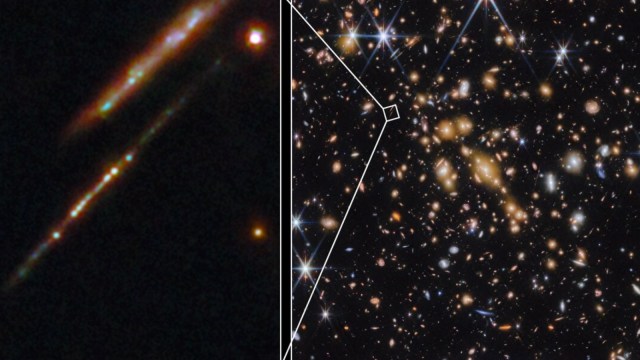A team of international astronomers has identified five young star clusters, potentially the oldest ever discovered, originating from the Universe’s infancy.
Implications for Understanding the Early Universe
These massive, gravitationally-bound clusters offer crucial insights into the reionization era, marking a significant advancement in cosmological research.
Details of the Discovery
- Source of Discovery: Led by Stockholm University, in collaboration with teams from Europe, the US, and Japan.
- Timing: Found in an infant galaxy less than 500 million years post-Big Bang.
- Technology: Utilized data from the Hubble and James Webb Space Telescopes for observations.
Scientific Significance
- Contribution to Knowledge: Provides a rare glimpse into star formation processes during the Universe’s early stages.
- Comparison with Local Clusters: Significantly denser and younger than nearby star clusters, hinting at unique formation conditions.
Multiple Choice Questions (MCQs):
- When were the newly discovered star clusters believed to have formed?
- A) 4.5 billion years ago
- B) Less than 500 million years after the Big Bang
- C) During the reionization era
- D) 13.6 billion years ago
- What telescope facilitated the astronomers to peer into the early Universe and discover these star clusters?
- A) Hubble Space Telescope
- B) James Webb Space Telescope
- C) Kepler Space Telescope
- D) Spitzer Space Telescope
- What is the potential significance of these discoveries?
- A) Understanding the reionization era
- B) Discovering black holes
- C) Identifying exoplanets
- D) Exploring dark matter
